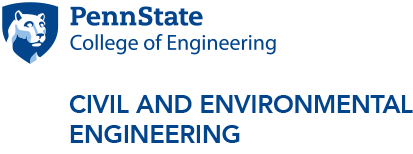Unravelling Water Pathways and Their Impact on Water Quality Dynamics
Abstract
The mechanisms by which catchments store and release water are complex and variable in space and time. Hence catchment response is heavily influence by intrinsic characteristics such as the geologic setting and by climatic conditions. Given that the subsurface architecture of the landscape remains difficult to characterize, chemical tracers such as ions and stable isotopes of water are powerful tools to infer water movement and release. We will illustrate the use of such tools in different headwater catchments.
Headwater streams play a crucial role in the landscape as sources of water and solutes to downstream locations. These streams are diverse and influenced by local physiography (geology, geomorphology) and meteorological factors, such as the amount and form of precipitation inputs. In this talk, we investigate water contributions and flowpaths, using water isotopes as well as the distribution of natural solutes across the landscape as chemical tracers. We illustrate how seasonal patterns in isotope ratios can reveal that most water in the streams originates from fall and winter precipitation events, but with high seasonal variability in tributary contributions. Additionally, we demonstrate that studying the response of streamwater chemistry to discharge variations across different timescales provides further insights into how pathways of water as well as landscape sources contributing to streamflow change with event and catchment conditions. Our work unveils substantial heterogeneity in chemical solute behaviour linked to changes in hydrologic connectivity and heterogeneity in solute distributions, indicating variations in rock-water interactions and runoff generation processes in space and time. Our research contributes insights into the spatial heterogeneity and temporal dynamics of flow and source water in headwater streams and emphasises the need to consider both temporal and spatial factors together to understand the complex dynamics of solute mobilisation and transport in catchments.
Bios
Dr Julia Knapp is a catchment hydrologist and her research focusses on understanding how the transport and movement of water through the landscape affects the mobilisation of solutes and hence water quality under changing climate and catchment conditions. She is an Assistant Professor at the Department of Earth Sciences at Durham University in the UK. She received her PhD from the University of Tuebingen, Germany, in Environmental Sciences and was a postdoctoral fellow at ETH Zurich before moving to the UK.
Dr Catalina Segura’s research focuses on understanding how water and sediment move in watersheds and the impact of these processes on water availability, quality, and ecological health. My primary focus is hydrology and geomorphology, often at the intersection of these broad disciplines and ecology. She is an Associate Professor at the Department of Forest Engineering Resources, and Management at Oregon State University. She received her PhD from the University of Colorado, in Geography, her master’s from the University of Washington, in Environmental engineering and was a postdoctoral fellow at North Carolina State University.
Event Contact: Li Li



